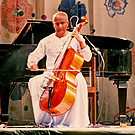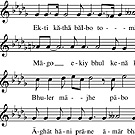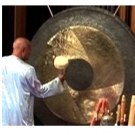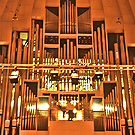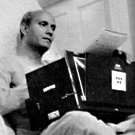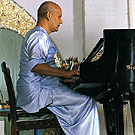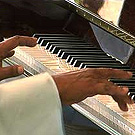It is through music that the universal feeling of oneness can be achieved in the twinkling of an eye … music has the opportunity, the capacity, to claim the universe as its very own. — Sri Chinmoy
|
.
Sri Chinmoy’s Peace Concerts During his lifetime, Sri Chinmoy gained worldwide recognition as a prolific composer and a consummate musician. In 1984, he offered the first of what he called ‘Peace Concerts’ to an audience of 8,500 people in Cologne, Germany. For the next twenty or more years, he travelled the globe sharing the message of peace through his music. Here is a list of Sri Chinmoy’s first 600 Peace Concerts, together with photographs; links to talks, poems and dedications; and additional information. Read more...
.
|
|
The Flute of Light — A Tribute to Sri Chinmoy’s Western Flute by Dr. Vidagdha Bennett In 1976, Sri Chinmoy made two momentous musical discoveries: the esraj and the flute. The esraj he came across in February, in a book of Indian instruments. When he obtained one shortly afterwards, the haunting effect of this bowed instrument delighted his musical ear, and the esraj subsequently accompanied him on a visit to Australia at the end of February. It was to be here, in Australia, that Sri Chinmoy would become acquainted with the classical Western flute. Read more...
.
|
|
Analysis of Sri Chinmoy’s Music by Shambhu Neil Vineberg Sri Chinmoy sits on the floor in his meditation room playing the harmonium. Around him are strewn a few of his old notebooks from the Ashram from which he chooses the poems to set to music. He is lost in the very private, personal world of musical creativity. Diligently trying out numerous musical phrases to a particular line of poetry, he plays his harmonium quickly, until he decides that he has captured the essence of the words he is working with. Read more...
.
|
|
A Summit-Height Musical Experience at Interlaken by Dr. Vidagdha Bennett The clock had not yet struck six. Suddenly, in a mountain village in Switzerland, a gong was struck. Through the darkened sky, across the emerald green waters of Lakes Thun and Brienz, and high into the unseen peaks beyond, the sound travelled. The concert of concerts had begun. Read more...
.
|
|
Cascading Organ Delight: Sri Chinmoy’s performance on the Grand Organ at the Sydney Opera House by Prachar Stegemann Part 1 — the events leading up to ‘Sri Chinmoy’s historic organ performance.
.
|
|
History of Sri Chinmoy’s Musical Manifestation from 1943-1975 by Shambhu Neil Vineberg At the Indian Cultural Centre in New York on March 20, 1966, the Master performed ten devotional songs that included both ancient and modern music, sung in both Sanskrit and Bengali. The Sanskrit chants were ancient mantras set to music by Sri Chinmoy after he entered the country: ‘Agne naya supatha raye asman’, ‘Asato ma’, ‘Tvamadi deva purusha purana’. Included among the ten songs which Sri Chinmoy sang at the concert were the following three, composed when he was only twelve years old: ‘Tamasa rate’, ‘Sundara hate’ and ‘Jago’. Read more
.
|
|
The Birth of a New Creation by Prachar Stegemann “I dare any sensitive man or woman to remain unmoved by this music.” — Conductor Isaac Karabtchevsky had just heard Sri Chinmoy playing the pipe-organ. Sri Chinmoy is better known as a meditation teacher, poet, composer, painter, athlete, weightlifter, for his worldwide Peace Concerts … He recently took up keyboards, with stunning results. Read more...
.
|
|
Reflections on Musical Composition by Hridananda Andrés Ramón A dissertation on musical composition from a technical, aesthetical and spiritual point of view; it begins by analysing the approach of Western composers such as Stravinsky, Boulez and Harvey, and it expands into the Eastern spiritual/yogic approach as expounded by Sri Aurobindo and Sri Chinmoy. Submitted to the Department of Music, Iceland Academy of the Arts, 2008. Read more...
.
|

